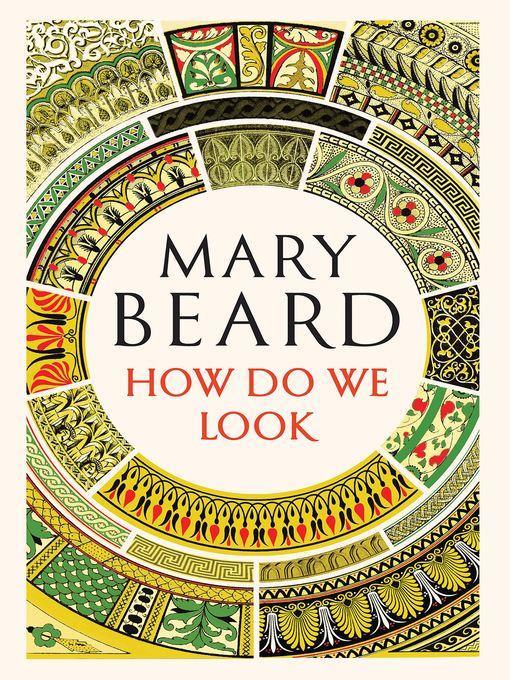
How Do We Look
The Body, the Divine, and the Question of Civilization
کتاب های مرتبط
- اطلاعات
- نقد و بررسی
- دیدگاه کاربران
نقد و بررسی

June 11, 2018
Beard (Women & Power: A Manifesto) examines how people historically have interpreted art in this disjointed two-part narrative. Part one looks at depictions of the body in ancient art from around the world, including an enormous 3,000-
year-old stone head that sits in a jungle in Mexico and ancient Chinese emperor Qin’s tomb in China. In Greece, the sculpted, well-toned male body in statuary and painted pottery images of women performing domestic tasks convey a message about ideal living, which Beard likens to advertisements of the 1950s. Part two focuses on depictions of the divine in art as they appear in the Hindu temple at Angkor Wat in Cambodia; cave art at Ajanta, India; a mosaic of Jesus at the Church of San Vitale in Ravenna, Italy; the Sancaklar Mosque in Istanbul; and elaborately illustrated Jewish Bibles that have sparked “human controversy and conflict, peril and risk.” Beard’s clear and often witty prose is on full display and, as usual, her book is filled with historical detail, but the two sections fail to come together. There are enough intriguing morsels to satisfy longtime fans of Beard, but the book as a whole feels underdeveloped. Illus. and photos.

July 1, 2018
The renowned classicist delivers another tantalizing morsel of analysis, this time on "art, and our reactions to it, over thousands of years and across thousands of miles."In this "inevitably and unashamedly selective book," Beard (Classics/Cambridge Univ.; Women & Power: A Manifesto, 2017, etc.) reviews the very purpose of art: who made it, who viewed it, and how we see it. From 3,000-year-old Olmec heads through the iconoclasts and Christian and Islamic portrayals of God, she traces historic conflicts over images of man and gods. The Egyptian memorial of a young woman named Phrasikleia (circa 550 B.C.E.) engages viewers in the way that future Greek and Roman statues would. But there are also images "not designed to be seen at all"--e.g. the terra-cotta warrior complex of China's first emperor, which "adds up to the biggest tableau of sculpture made anywhere on our planet, ever." The power of those portrayed, like Ramesses II, is achieved by their outsized presence, but to illustrate a central point, the author notes that images of power are only as strong as viewers allow. Throughout the book, the wealth of illustrations clearly reflects Beard's analyses. In the 18th century, art historian and archaeologist J.J. Winckelmann argued that "you could trace the rise and fall of civilization through the rise and fall of the representation of the human body." Winckelmann set the standard to judge other cultures in his assessment of the ultimate symbol of classical style, the Apollo Belvedere. But Beard's ideas about the images of gods are even more fascinating, especially with regard to the Ajanta Cave drawings in India, which force viewers to actively interpret their complexity, searching for truth and faith in the darkness. Even more thought-provoking is the Islamic use of calligraphy, more symbolic than practical, bridging the gap between art and the written word.Yet another triumph for Beard: a joy to read, too short for certain, packed with lessons quickly absorbed.
COPYRIGHT(2018) Kirkus Reviews, ALL RIGHTS RESERVED.

Starred review from August 1, 2018
Classicist and best-selling author Beard follows SPQR (2015) with this slim yet insightful illustrated volume based on two episodes of the BBC/PBS series Civilisations.The book is divided into two corresponding parts: the first examines the human body in art, the second, art and faith. Beard's reworking of Kenneth Clark's original BBC program shifts the focus from creator to audience while also giving women more due. And unlike Clark, Beard expands her view beyond western Europe to offer an admirable survey of cultures from Egypt to China, Judaism to Christianity, centuries past to the modern era, all while emphasizing the significance of the viewer over the artist. For example, the ancient Mexican work Olmec Wrestler is sculpted in a suspiciously classical style and is noticeably different from other Olmec statues, yet, real or fake, it was used to illustrate the sophistication of the Olmec civilization. As Beard emphasizes the power of the context in which we look at and interpret art, she ultimately suggests that civilization itself is a leap of faith. Beard is having fun in this joyfully accessible primer, backed with a robust appendix, for all interested in a new perspective on religion, art, and history.(Reprinted with permission of Booklist, copyright 2018, American Library Association.)

July 1, 2018
Beard (classics, Cambridge; SPQR) desires to shift the focus of art history from the artist to the viewer in this brief book, which serves as a companion to the PBS show Civilizations. Using extensive illustrations of painting, sculpture, and architecture from around the world and throughout history, the author explores how people looked at the human body and how they considered the divine through their art and how their expectations shaped such art in return. This work is successful in complicating the reader's understanding of how and why art functions rather than in providing any specific interpretations, particularly with respect to gender and authority issues. The multiple chapters on Greco-Roman sculpture are the strongest; the reader becomes a joint viewer with the author. Elsewhere, the brevity and the broad scope may prove challenging (or tantalizing): the reader gets only a brief glimpse or a quick thought in some sections. VERDICT Recommended for fans of this popular author, the Civilizations program, and those looking for brief foray into an alternative form of art appreciation.--Evan M. Anderson, Kirkendall P.L., Ankeny, IA
Copyright 2018 Library Journal, LLC Used with permission.

























دیدگاه کاربران